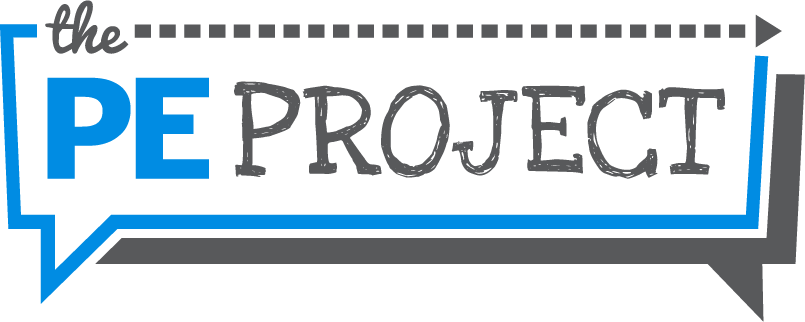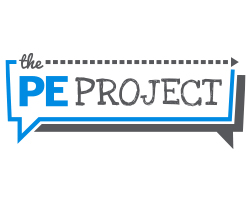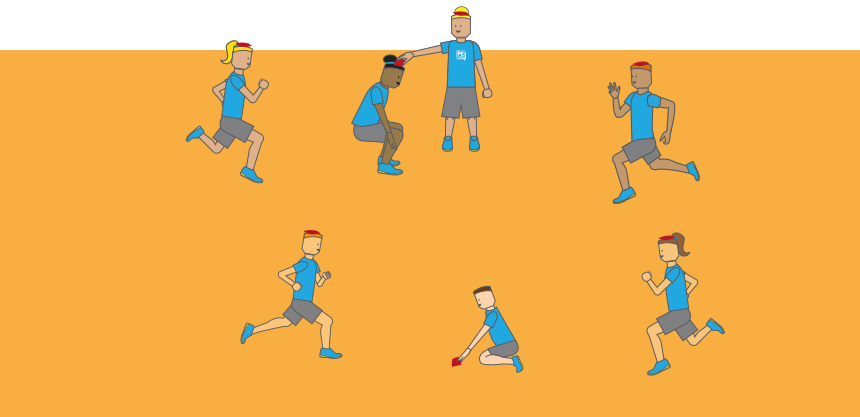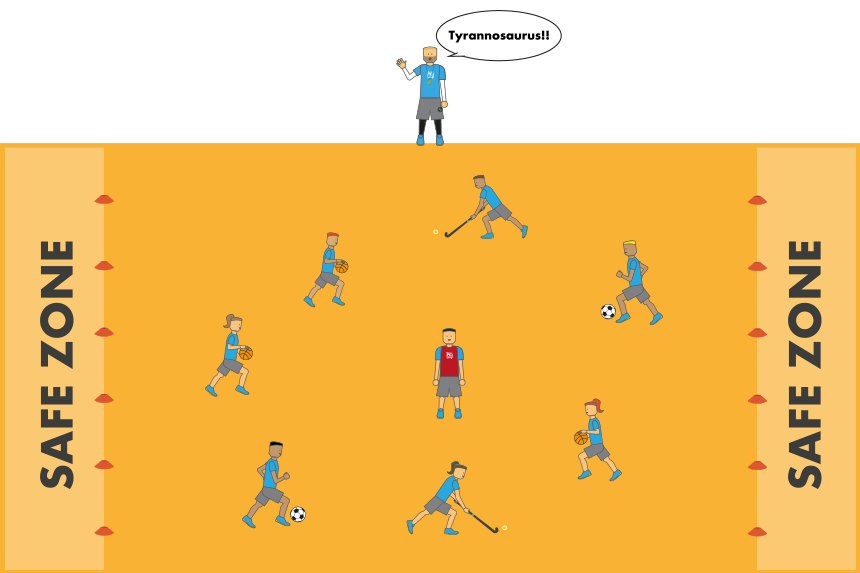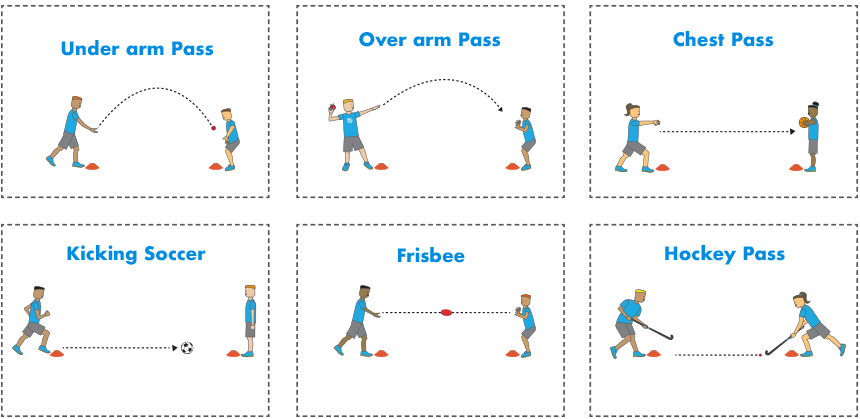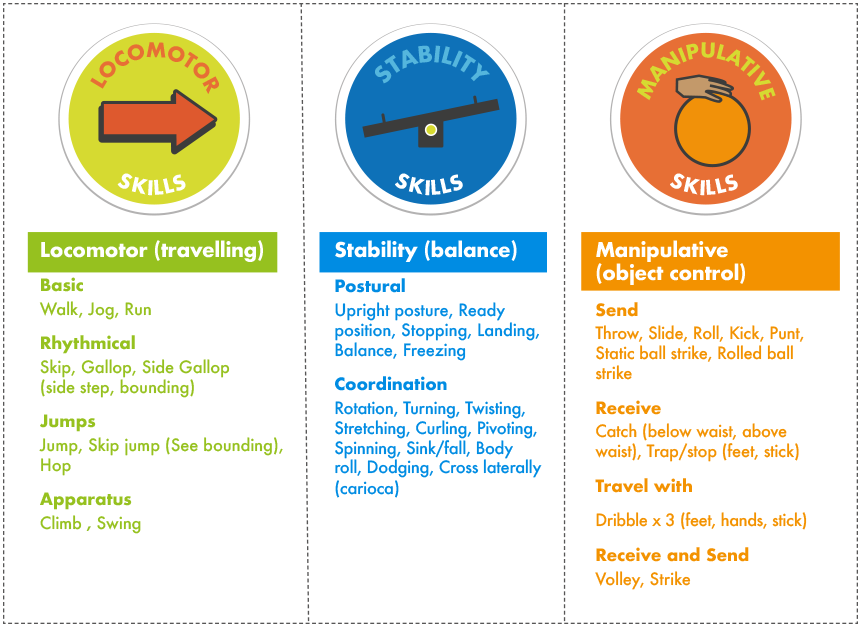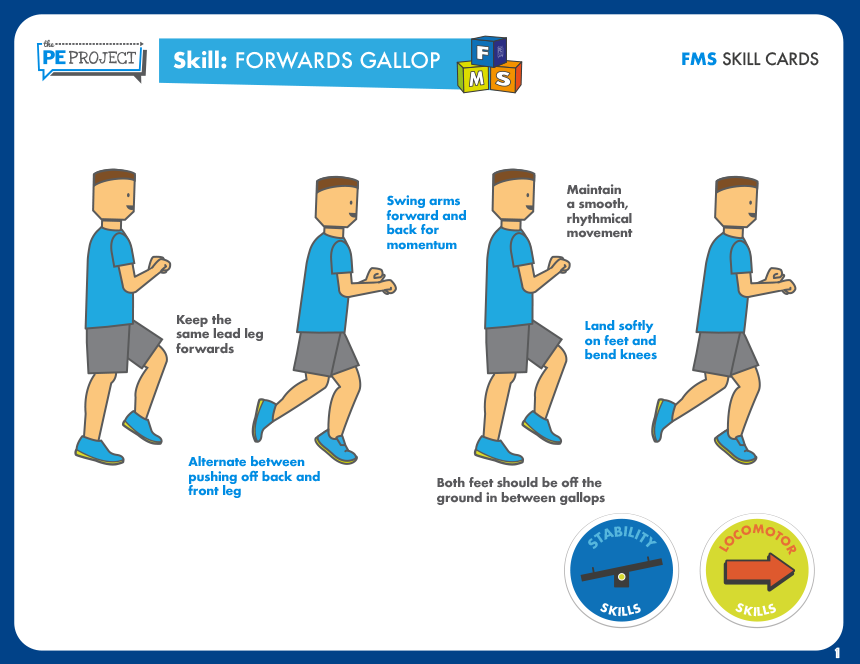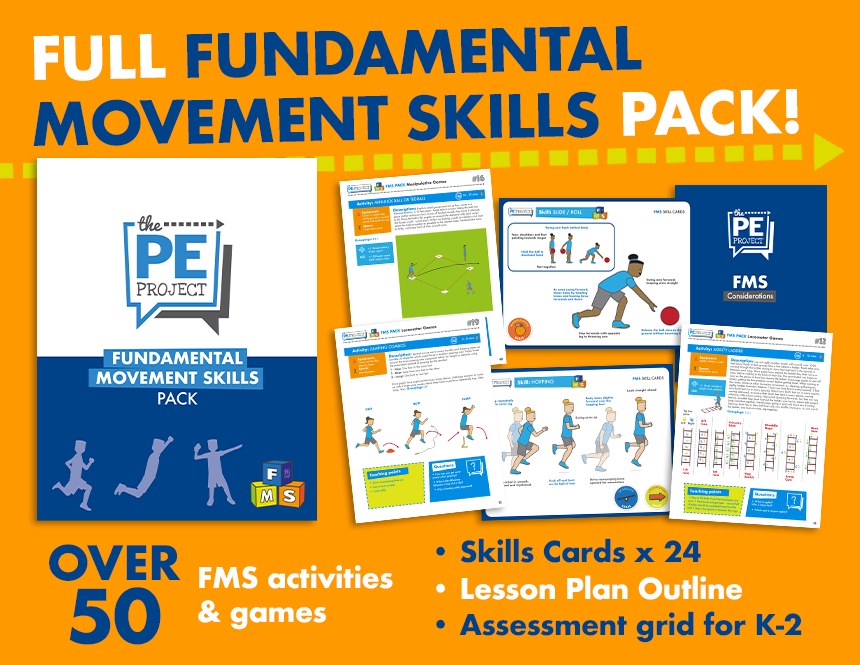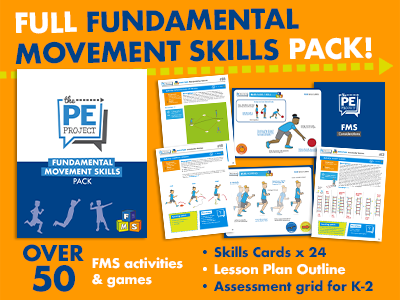When teaching Fundamental Movement Skills (FMS) in Physical Education lessons, it is helpful to have a range of activities, teaching models and styles in the toolbox to help ensure students make great progress. FMS lessons are generally taught to students from Pre-K to Grade 4 (Nursery to Year 3).
In this unit, children will focus on exploring and developing fundamental movement skills: Locomotor (travelling); Manipulative (object control); and Stability (balance). It has been well supported that children in (K-2) KS1 ultimately benefit most from developing Fundamental Motor Skills which help them improve dexterity and confidence in themselves (Chedzoy, 2012).
Below are a few Fundamental Movement Skills activities, an example skill card and lesson plan from our ‘Full Fundamental Movement Skills Pack’ that you can use in your lessons.
Description: Each student has a beanbag on their head and must travel around the area trying to make sure it doesn’t fall off. If beanbag does fall off, students must kneel down next to it and wait for another student to crouch down and place it back on their head. Teacher can call out different travelling challenges such as: walk forwards, backwards, sideways, sit-down, stand up, lie on you stomach, crawl etc.
Top Tip: Look out for students helping each other, and praise/thank them publicly. This will encourage kindness and care in you lessons.
Teaching Points
- Travel smoothly and avoid dropping beanbag from head
- Help classmates who’ve dropped their beanbag by placing it back on their head
- Explore travelling in different ways whilst balancing beanbag on head
Questions
- What does good posture mean/look like?
- Why is good posture important?
- How can you improve your posture?
Description: Set out your playing area with two safe zones at either end. Choose 1-3 students to stand in the middle of the gym with their eyes closed - they are the Tyrannosauruses (taggers). The rest of the class has a ball each and when the game begins must dribble around the area, trying to be as bold as possible by getting close to the dinosaurs. However, when the teacher calls “Tyrannosaurus” the taggers open their eyes and must try and tag as many people as possible. Pupils are safe if they can make it into safe zones without getting tagged. Tagged pupils, become the ‘tyrannosauruses’ for next round, previous taggers get equipment and join in.
Alternatively: if pupils are competent dribblers allow them to shout out “Tyrannosaurus” when they lose control of their ball.
Top Tip: Remind students that when running away from taggers they must still dribble their ball with control i.e., they can’t pick it up and run with it.
Teaching Points
- Dribble confidently all around the area
- When you hear “Tyrannosaurus” quickly dribble to the nearest safe zone
- Always dribble the ball close to body and under control (no picking the ball up and running with the ball)
Questions
- How bold were you in dribbling close to the taggers?
- What does good control when dribbling look like?
- When is dribbling used in invasion games?
Description: Set up stations around the playing area with cones and equipment already set out. Students work round each station in pairs, trying to perform passes with good technique and as many as possible. Students should spend approximately 1-3 minutes on each station. Make sure that students leave equipment tidy for the next pair rotating round. Depending upon the size of your class, you can have numerous pairs working within each station i.e., 3 pairs in each, with their own cones and equipment. Students could also have a clipboard and table where they can record how many passes they performed on each station.
Teaching Points
- Recall the various passing techniques for each station
- Keep track of how many successful passes you make
- Work together with your partner, encouraging one another
Questions
- What are the differences between an underarm and an overarm throw?
- Which station did you perform the most passes successfully?
- Which station would you like to improve the most?
Based on experience, we have found it best to begin lessons with young students (K-2) with simple call and respond games. These are excellent for emphasizing listening skills and an easy way to get all the class moving and learning basic locomotor/travelling skills. Tag games are also a great group activity where you can gradually increase the complexity of the tag games, and emphasize the importance of playing fairly and respectfully with others.
Manipulative Skill Progressions When introducing the development of manipulative skills it is best to begin with the easiest (i.e., using a large ball with hands) and progressing towards the most complex (i.e., hitting a small ball with a long stick). Use the diagram below as a guide for manipulative skill progressions.
Pupils at the youngest ages should experience a broad range of different games, but these must be modified versions of the game.
Skill Cards: When teaching Fundamental Movement Skills it can be extremely useful for students to use skill cards to deepen their understanding of both simple and complex skills. For example, when trying to teach students how to perform a forwards gallop or underarm throw they could use the above skill cards to help build on their vocabulary and mental imagery of the skills. This is an example of a 'Reciprocal Teaching Style' which you can learn more about in our 'Teaching Styles' article.
The Full Fundamental Movement Skills Pack
Would you like to deliver high-quality Fundamental Movement Skills (FMS) lessons for PE? If so, then this pack is for you! It has been developed by highly-qualified and experienced PE teachers for specialists and non-specialists alike who want to deliver fun, engaging FMS lessons where students can make exceptional progress.
In the Full Fundamental Movement Skills Pack by the PE Project you will find:
- Over 50 FMS activities and games
- Skills Cards x 24
- Lesson Plan Outline
- Assessment grid for K-2
- Plus lots of additional extras like questions, teaching recommendations, differentiation strategies.
